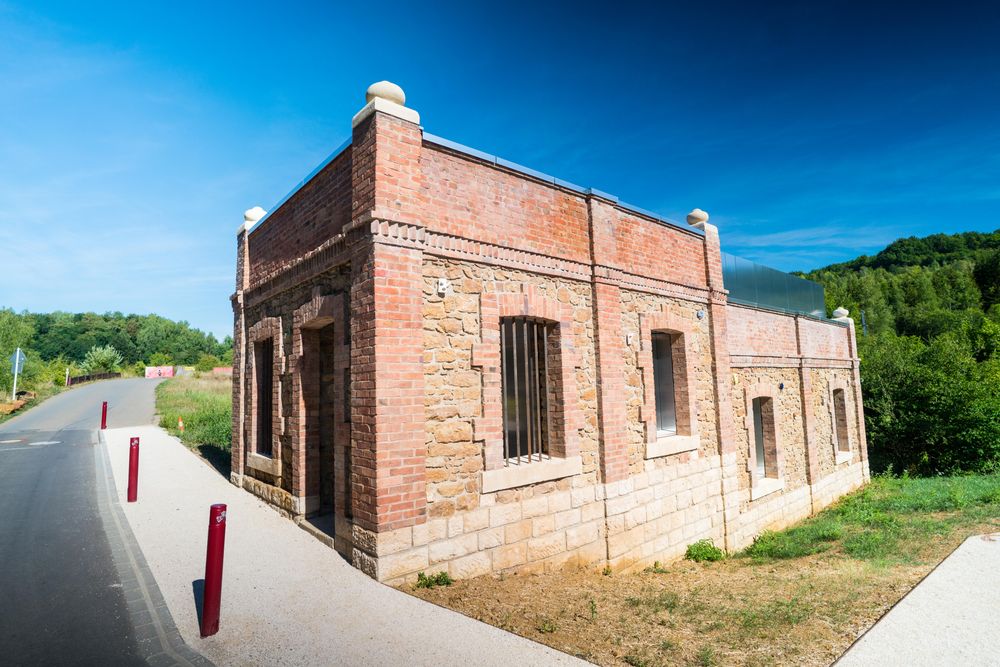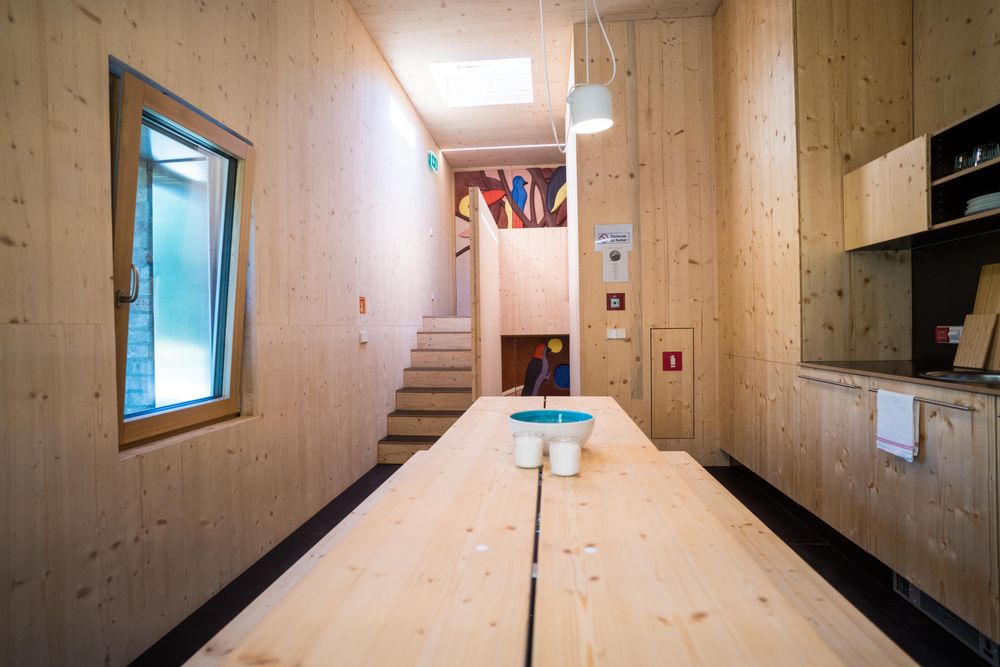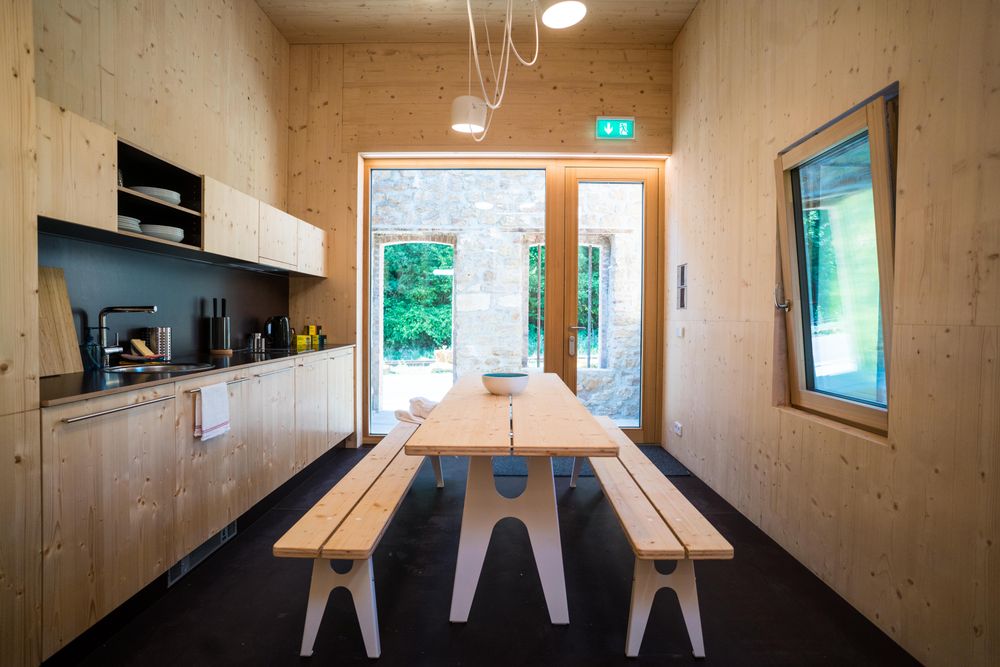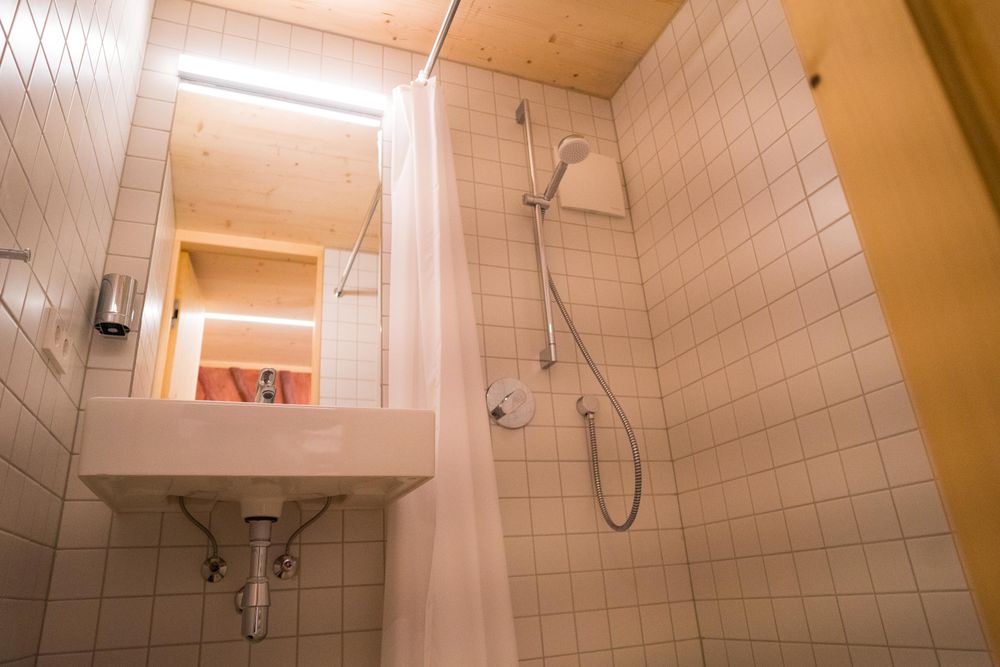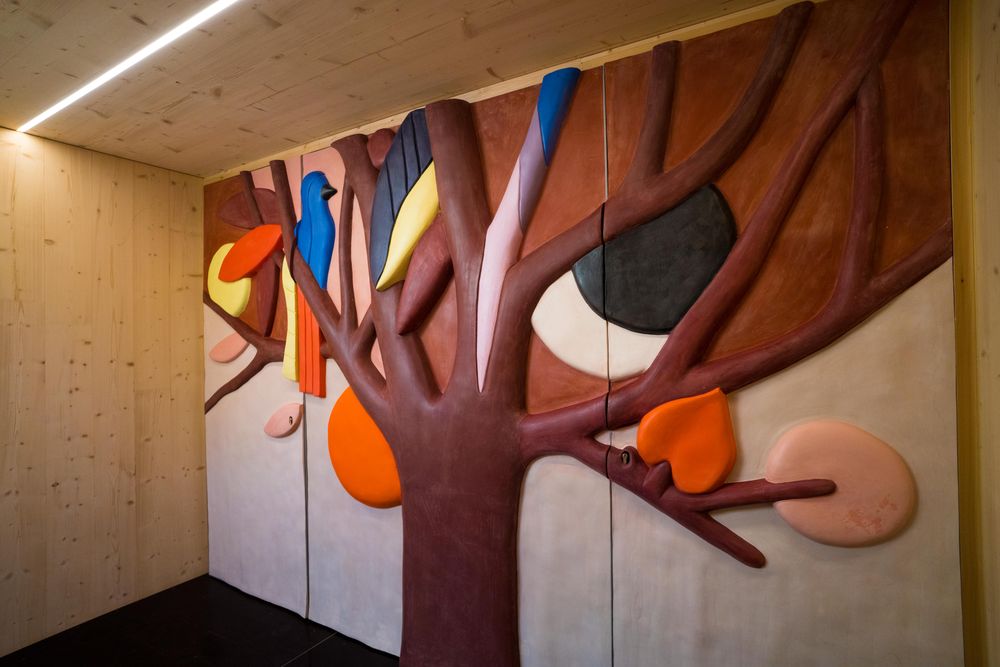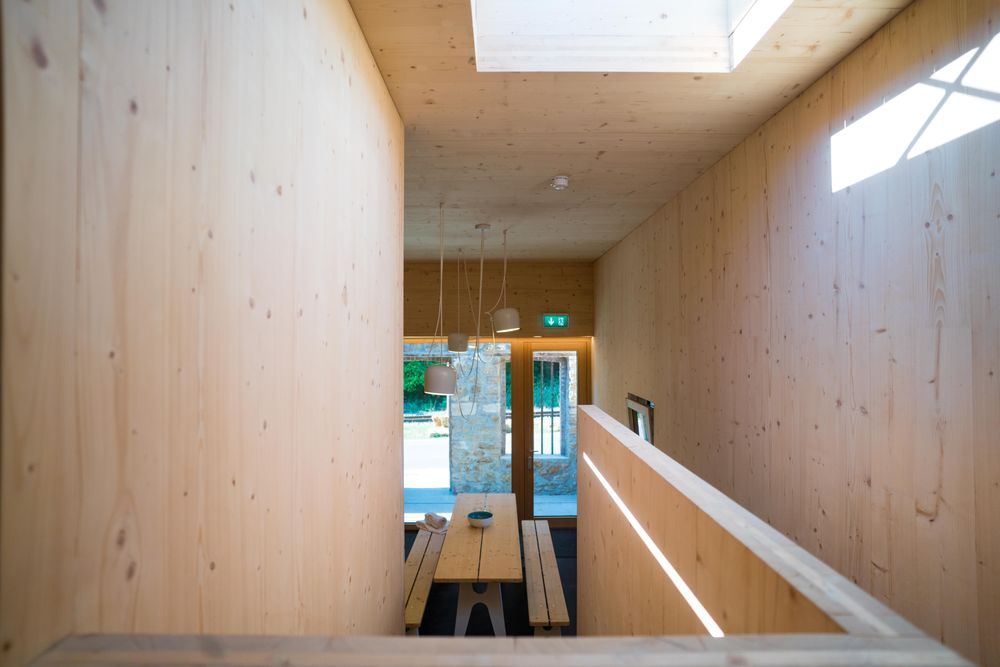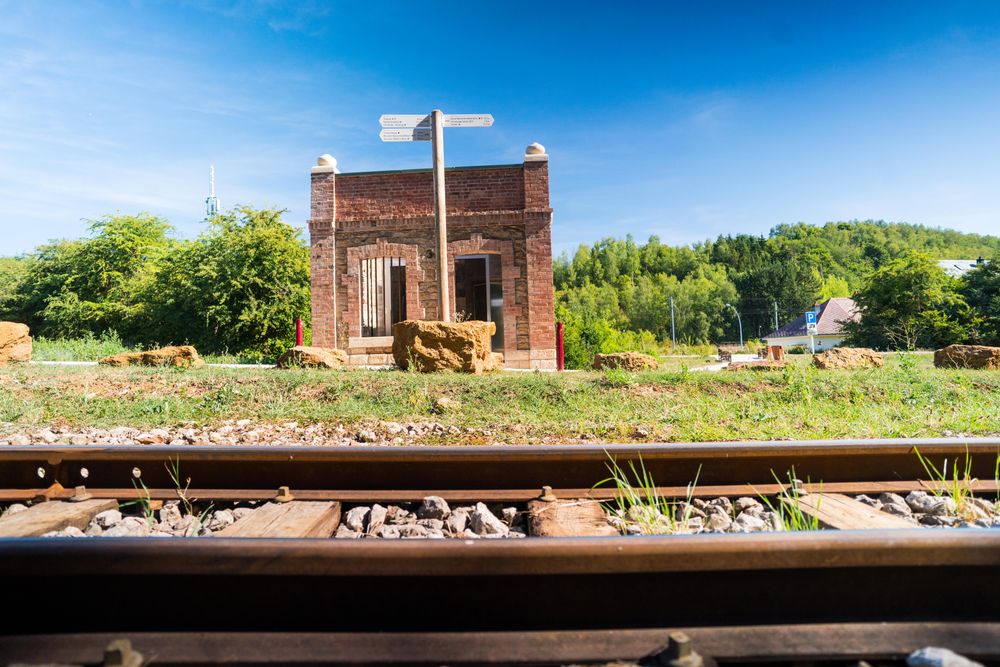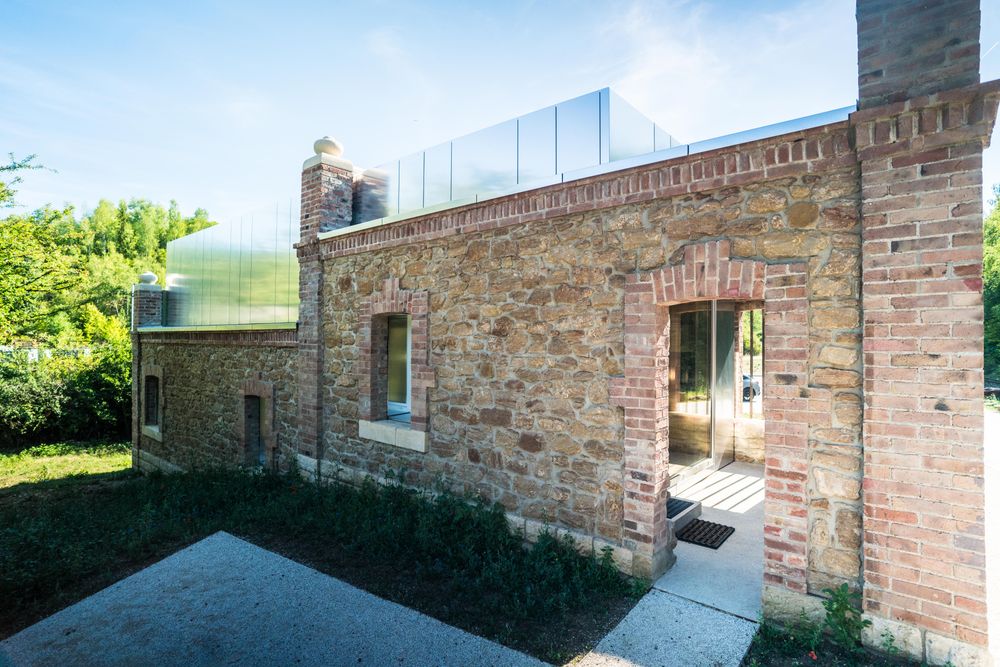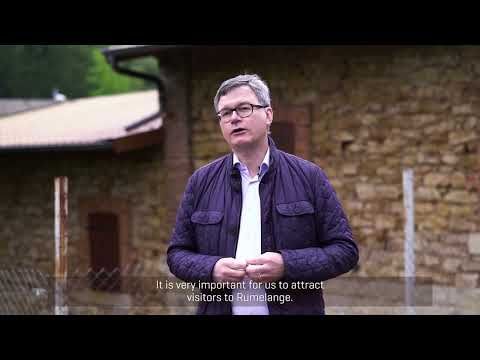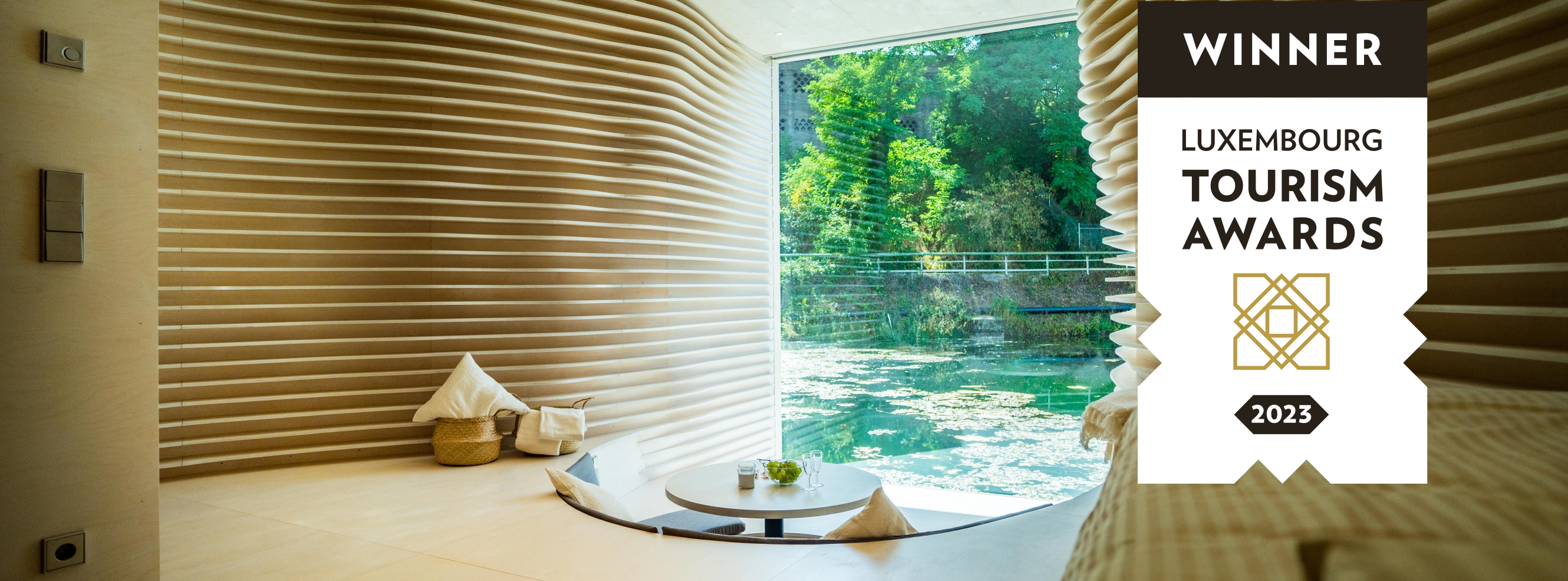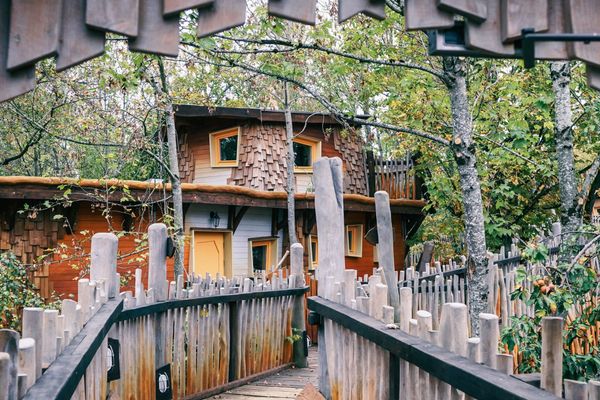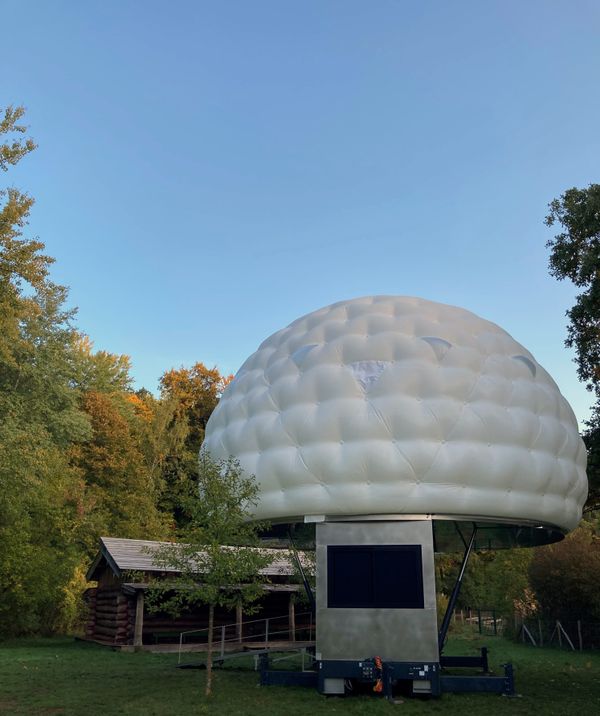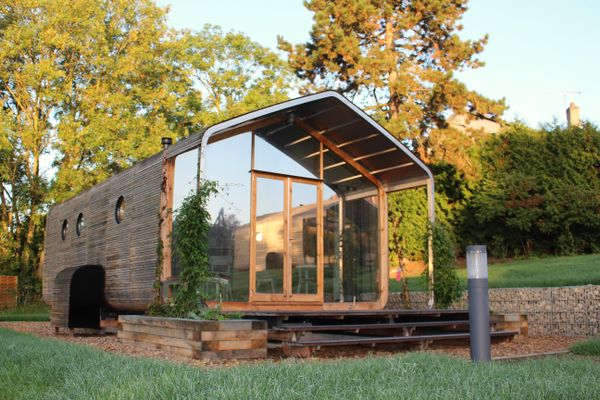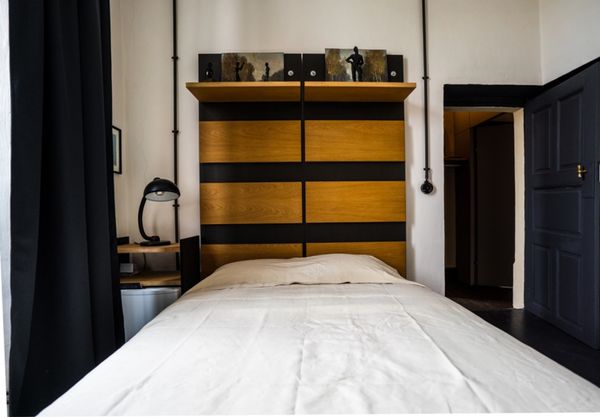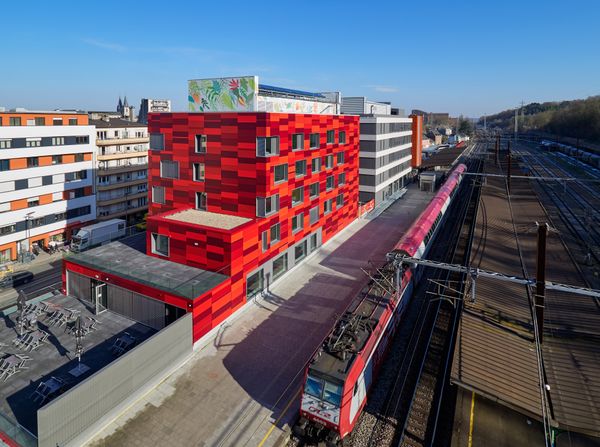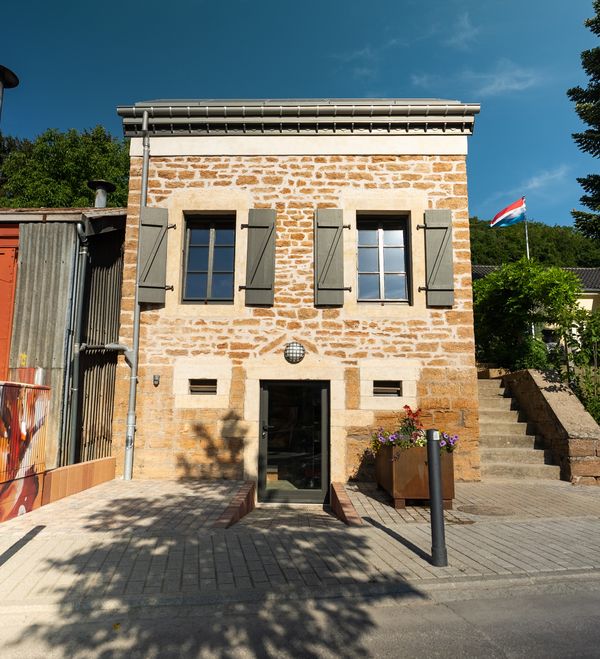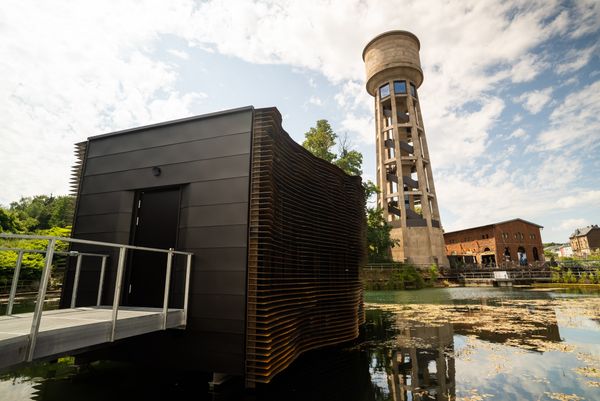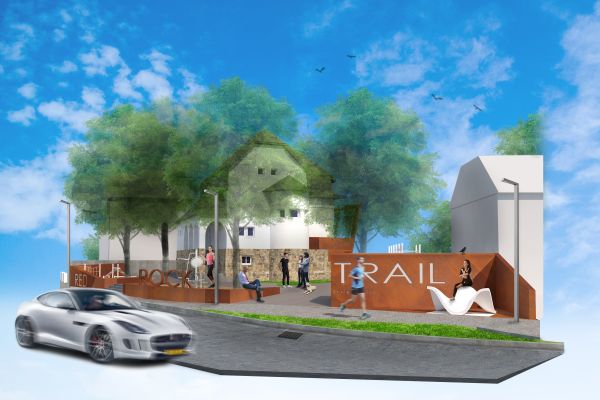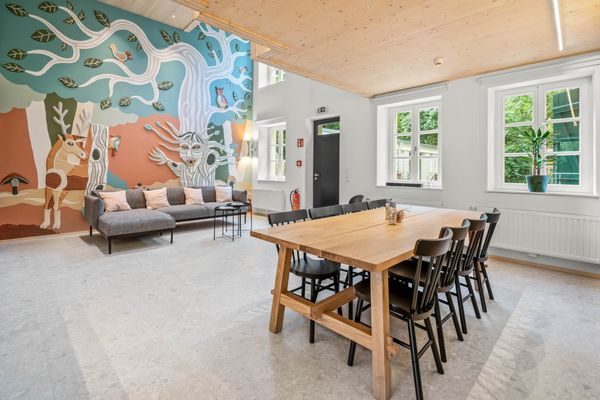The ‘Maison Gonner’, as it was called by the locals, stood on the mining path on Rue de la Bruyère, towards the Klinker Intermoselle factory. Around 1900, the mine’s administrative offices were located there. Located on the site of the National Mines Museum, its architecture bears witness to the style of industrial buildings of the time.
Eight places to sleep await new guests inside.
Divided into four small sleeping cabins with four twin beds over two floors, which all have a shared anteroom where you can relax or chat with other guests, "Haus Gonner" is a small miracle of room division. The upgrades haven't even increased the footprint of the building. On the contrary: the outer walls have been preserved, only the interior has changed, with the new living element being used as a whole. The concept was elaborated by HAS Heisbourg + Strotz Architectes.
There is also a kitchen and living unit in the front part of the building where guests can cook and eat together. A small passage outside also makes it possible to end the evening in style on a terrace.
The artists involved in the project inserted handmade clay birdhouses for migratory birds in the cavities of the exterior wall. Swifts, who were specifically targeted, like to nest in the walls of tall, old buildings and industrial constructions. This project feature provides an added facet to the interaction between humans, nature and culture.
Natural materials and colours are also used in a ceramic artwork in the wall inside the Maison Gonner. Here too, the relationship between mankind and its natural habitat is brought into focus.

